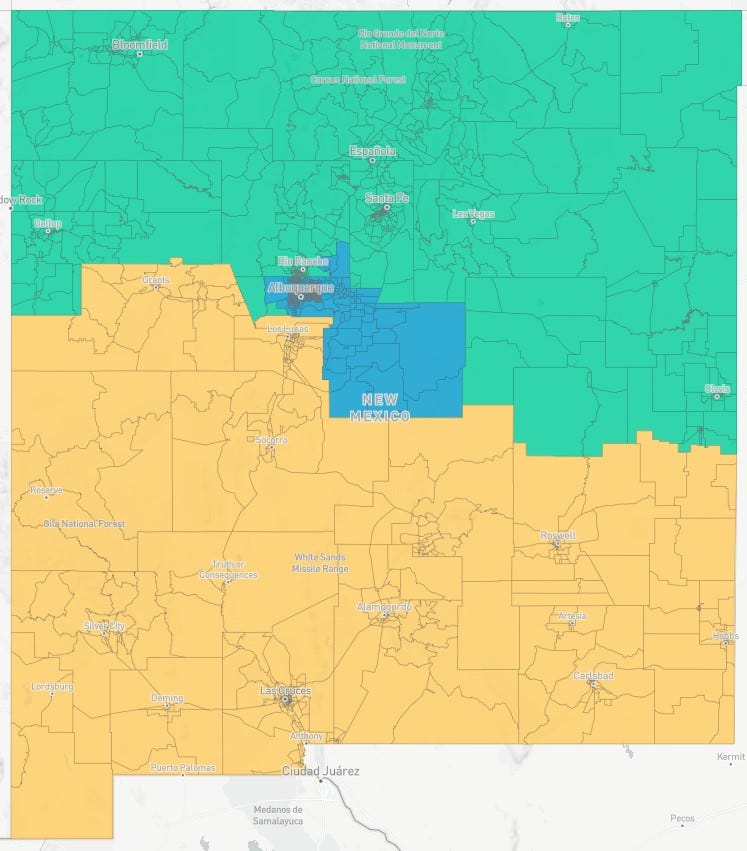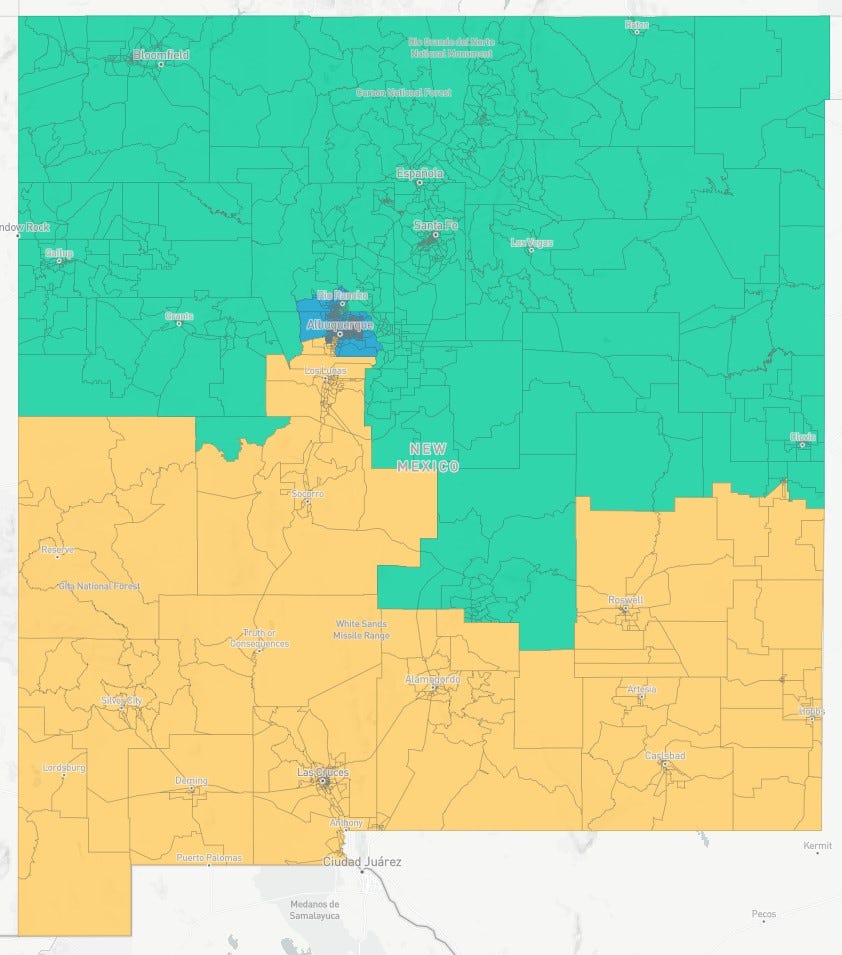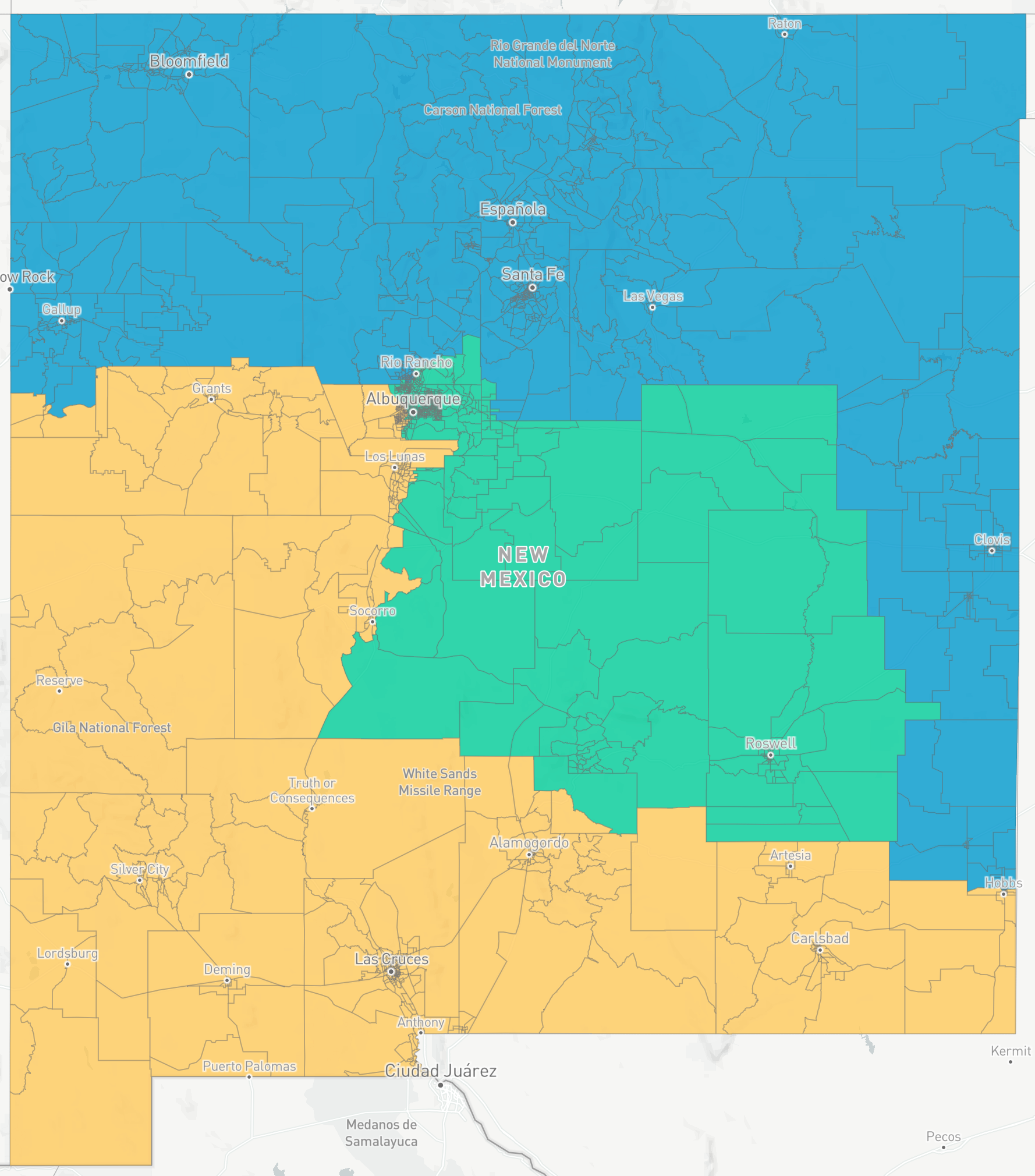New Mexico redistricting: Here are the three congressional maps being proposed to Legislature
SANTA FE - An advisory board on redistricting endorsed several plans for realigning the boundaries of political districts across New Mexico on Friday, backing proposed congressional districts that would consolidate Native American representation and strengthen a Hispanic majority.
The recommendations of the Citizens Redistricting Committee are a nonbinding reference point for the Legislature as it enters the once-a-decade process of drawing new political boundaries.
Several states, including New Mexico and Indiana, are using citizen advisory boards to temper political inclinations without taking redistricting powers away from state lawmakers. Judges might wind up using the advisory maps to resolve redistricting lawsuits.
New Mexico's Democratic-led Legislature plans to convene in December to redraw the boundaries for the state’s three congressional districts, 112 legislative seats and a commission that oversees public charter schools.
New Mexico Gov. Michelle Lujan Grisham holds veto authority in the process. It has been 30 years since Democrats controlled both the governors office and Legislature during redistricting.
Proposed changes to a congressional swing district in southern New Mexico are under special scrutiny.
Last year, U.S. Rep. Yvette Herrell ousted a first-term Democrat from the 2nd District seat. The district’s boundaries are likely to shift and contract to offset population gains in a oil-producing region in the southeastern corner of the state.
The advisory committee endorsed three separate plans for redrawing the state's three congressional districts.
One would largely hew to current district boundaries that provide a compact Albuquerque-based district pared with rural Torrance County, and two vast horizontal districts anchored in the north and south of the state.
The committee also endorsed a plan brokered by committee chairman and former state Supreme Court Justice Edward Chávez that would boost Native American representation in the state's 3rd Congressional District to nearly 20% of the voting-age population. That plan also would boost the share of voting-age Hispanics resident to more than 54% in the southern 2nd Congressional District.
And a third congressional map from the left-leaning Center for Civic Policy also won endorsement.
It would create an even greater Latino majority in the 2nd District by linking portions of Albuquerque with vast rural areas in southernmost New Mexico — fueling complaints of potential gerrymandering in favor of Democrats. The state Republican Party voiced several objections.
Advisory committee member Michael Sanchez, a former Democratic state Senate majority leader, said the map responds to residents of central and southern New Mexico who feel left out of the political process — “the Hispanics who have for many, many years not been heard, the African-American population down in the Hobbs area.”
“Things will start being a little bit different economically, socially … giving those individuals a possibility of electing someone that they choose,” he said.
A consensus congressional map from Native American communities was still under negotiation Friday and may be submitted independently to the Legislature.
New Mexico presents unusual challenges in efforts to comply with the U.S. Voting Rights Act to preserve communities of interest and give minority voters a fair shot to elect candidates of their choice.
Nearly 48% of state residents claim Hispanic ancestry — the highest portion in the nation.
The share of New Mexico residents who identify themselves as Indigenous by race or by combined ancestry was 12.4%, a percentage surpassed only by Alaska and Oklahoma.
The state is home to 23 federally recognized tribes, whose growing political clout is reflected in the election of Laguna Pueblo tribal member Deb Haaland to Congress in 2016 and her promotion this year to secretary of the Interior.
The seven-member redistricting committee has held more than a dozen public meetings across the state and vowed to endorse at least three proposed maps each for Congress as well as state Senate and Congress. Discussions stretched beyond five hours into Friday evening.
Democratic state Sen. Jacob Candelaria of Albuquerque says he is inclined to ignore the recommendations of a redistricting panel dominated by who he called political “elites” with no Native American members.
“My concern is following the law, being responsible, drawing maps that are fair,” said Candelaria, who does not plan to seek reelection in 2024. “I have a pretty good idea of communities of interest and where lines need to be drawn.”
Congressional Concept A
This proposed redrawing of New Mexico congressional districts is one of three designs endorsed by the state's Citizen Redistricting Committee. This map aligns most closely with the current districts.
View this map in more detail: https://districtr.org/plan/43318

Congressional Concept E
This proposed redrawing of New Mexico congressional districts is one of three designs endorsed by the state's Citizen Redistricting Committee. This map would boost Native American representation in the state's 3rd Congressional District, primarily in northern New Mexico.
View this map in more detail: https://districtr.org/plan/43888

Congressional Concept H
This proposed redrawing of New Mexico congressional districts is one of three designs endorsed by the state's Citizen Redistricting Committee. This map creates a large Latino majority in the 2nd District by including portions of Albuquerque. The state Republican Party has voiced several objections to this map.
View this map in more detail: https://districtr.org/plan/55984?portal

See more maps
See more congressional district map proposals, plus proposals for state House, Senate and Public Education Commission districts: https://www.nmredistricting.org/mapconcepts/